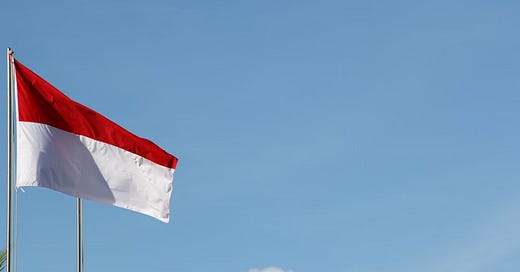In Geopolitics Today - Wednesday, April 20th
Indonesia to Join US-led Combat Drills, Russia Tests New ICBM, Pan-Arab Cooperation on the Rise
Indonesia to Join US-led Combat Drills
As part of the new Indo-Pacific strategy formulated by the United States, Washington is seeking to build stronger economic and security ties with, and amongst, countries in Southeast Asia. Indonesia is a critical pillar to this regional strategy, most importantly because Indonesia’s territory features a geographic formation key to an element within the broader US strategy of countering China: the Malacca Strait. An estimated 80% of all the crude oil that China imports passes this narrow waterway, a vulnerability that the US has identified and will likely seek to blockade in the event of a conflict. Even without a direct armed conflict between China and the US, Washington recognizes the value of holding sway over a waterway critical to China’s economic development.
As favourable relations with Indonesia preclude any form of control over the Malacca Strait, Washington is seeking to bring Jakarta into the strategic fold by facilitating economic relations and engaging in increased security cooperation. As part of this effort, Indonesia will host a new round of the US-led two-week Garuda Shield joint military exercise, which is set to involve Australia, Canada, East Timor, Indonesia, Japan, Malaysia, Papua New Guinea, Singapore, the United Kingdom and the US. The increased regularity with which the US and the Indonesian armed forces cooperate signals a shift from two decades ago, when Jakarta was barred from international weapons procurements by a 15-year US military embargo. While ties between Washington and Jakarta are warming, a resumption of the Garuda Shield exercise does not yet indicate any concrete alignment of Indonesia to the broader US strategy toward China in the region, with Jakarta expected to maintain its current course of pursuing an independent foreign policy.
Read more about this story here.
Russia Tests New ICBM
Russia has successfully tested a new iteration of its Sarmat intercontinental ballistic missile (ICBM). The multiple training warheads which make up the payload of the missile are said to have reached their target area at Russia’s Kura Missile Test Range on the Kamchatka Peninsula. Following the successful test, Russian President Vladimir Putin said the new missile will be able to overcome “all modern means of anti-missile defence.” The test was the third such successful one and was seemingly within the bounds of the limits imposed by the NEW START treaty, with US officials stating that the test posed no threat to them or their allies.
The RS-28 Sarmat 2 is designated as a “heavy” ICBM, and is estimated to be able to carry a 10 ton payload with a variety of different warheads. The missile is a liquid-fuelled heavy ICBM that Russia intends to deploy as a replacement for the much older SS-18 ICBM. Russia has been reducing the number of SS-18 missiles in its nuclear weapons inventory since the 1990s, with the requirements of the original START Treaty requiring an overall reduction from 308 to 154 missiles. Interestingly, the RS-28 is said to be capable of being fielded with nuclear-armed hypersonic boost-glide vehicles, bestowing Russia with a seemingly unparalleled ability to conduct a nuclear strike even when faced with advanced missile defences. The RS-28 comes at a time when Russia and the US are on opposing sides of the war in Ukraine, and both have been making considerable investments in order to replace and upgrade their existing nuclear arsenals in recent years.
Read more about this story here.
Pan-Arab Cooperation on the Rise
China’s rising influence across the Middle East, coupled with the fact that the United States is increasingly focusing elsewhere, has led countries in the region to recalibrate their interests and look for ways to benefit from the emerging regional order. Increasingly, the relationship between Saudi Arabia and the US appears to be in flux as neither appears eager or willing to maintain the mutual understandings which have underpinned the relationship between Washington and Riyadh since 1945. In turning away from Washington, Saudi Arabia appears to be seeking closer engagement with Arab countries in the region, and in doing so, is cultivating increased pan-Arab cooperation.
Saudi Arabia has recently opened avenues of dialogue with Iran and has outright refused to limit its energy production in the face of US pressures, a clear signal that the relationship between Washington and Riyadh is fraying. At the same time, Saudi Arabia has demonstrated a greater willingness to cooperate with its Arab partners by pushing for a broadening and deepening of cooperation between Arab states. This growth in pan-Arab cooperation can be seen in the deals being concluded between Middle East countries in oil, gas, and electricity. If the many energy projects across the region are successful, Saudi Arabia and its partners in the region will have worked to create a pan-Middle Eastern power grid which connects to Iran.
Read more about this story here.



